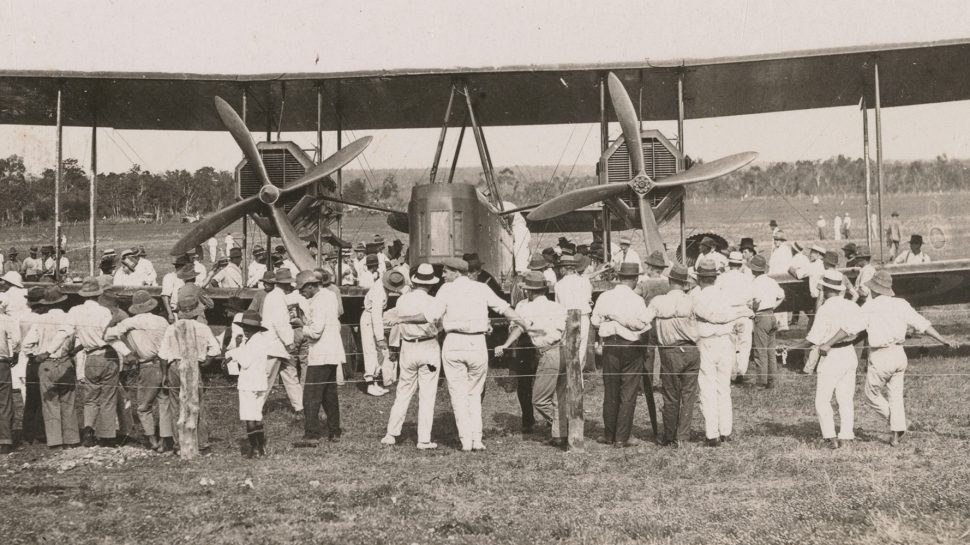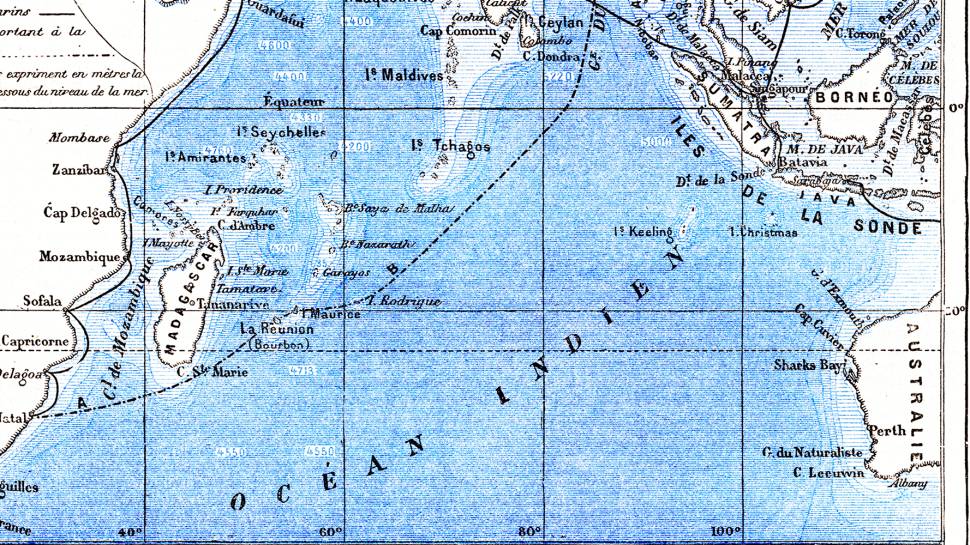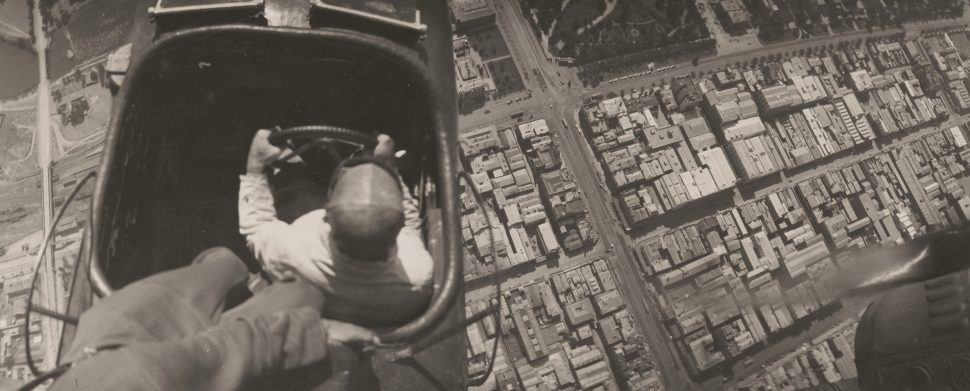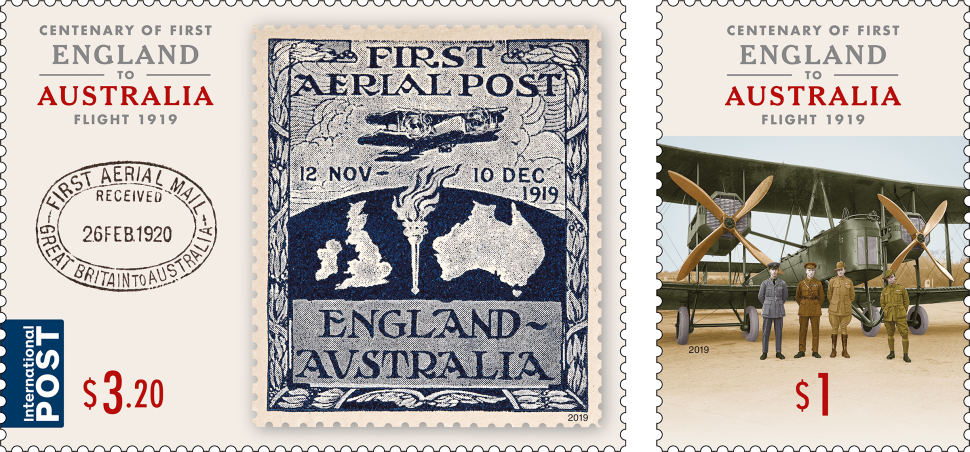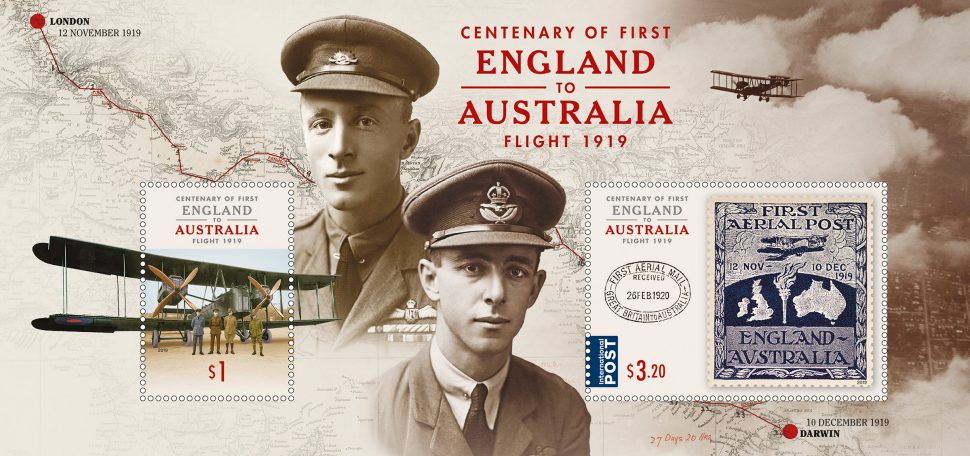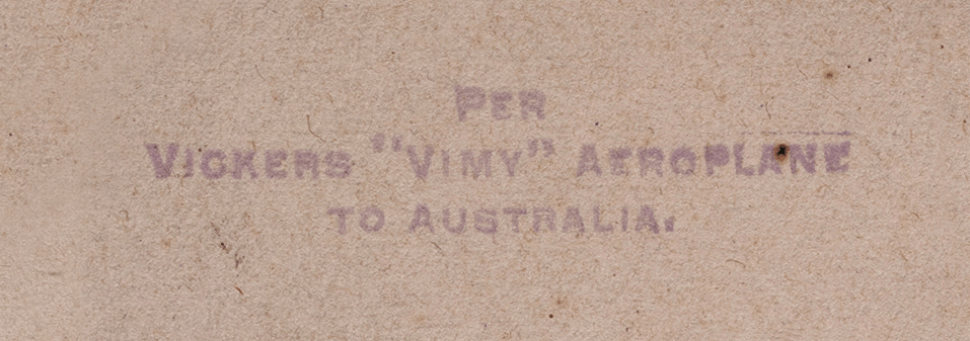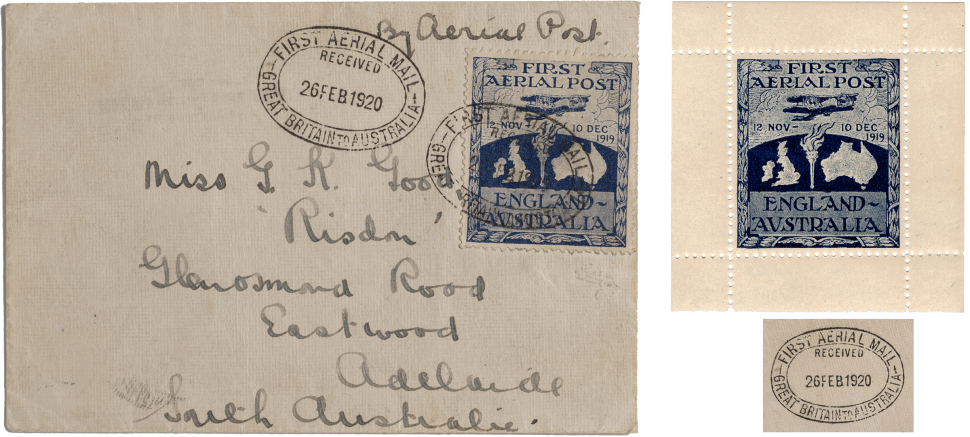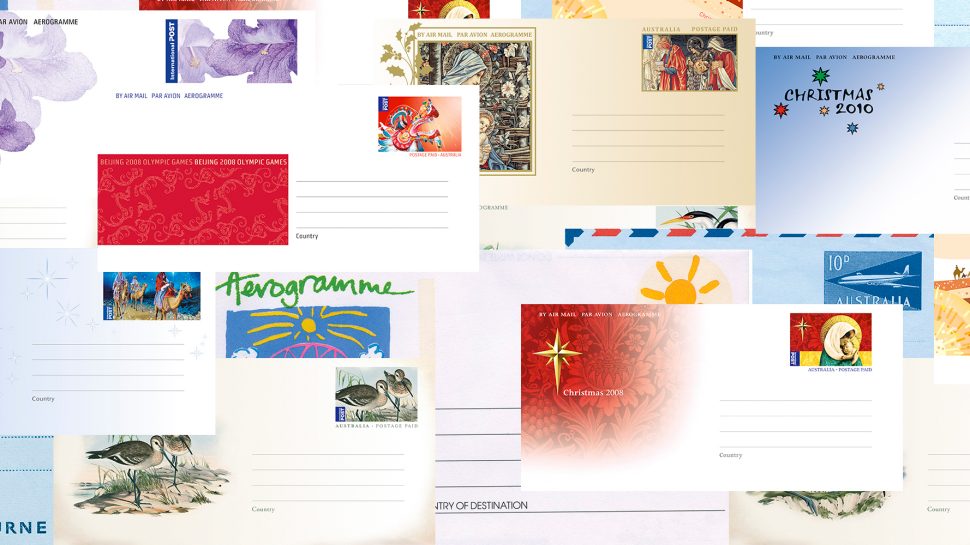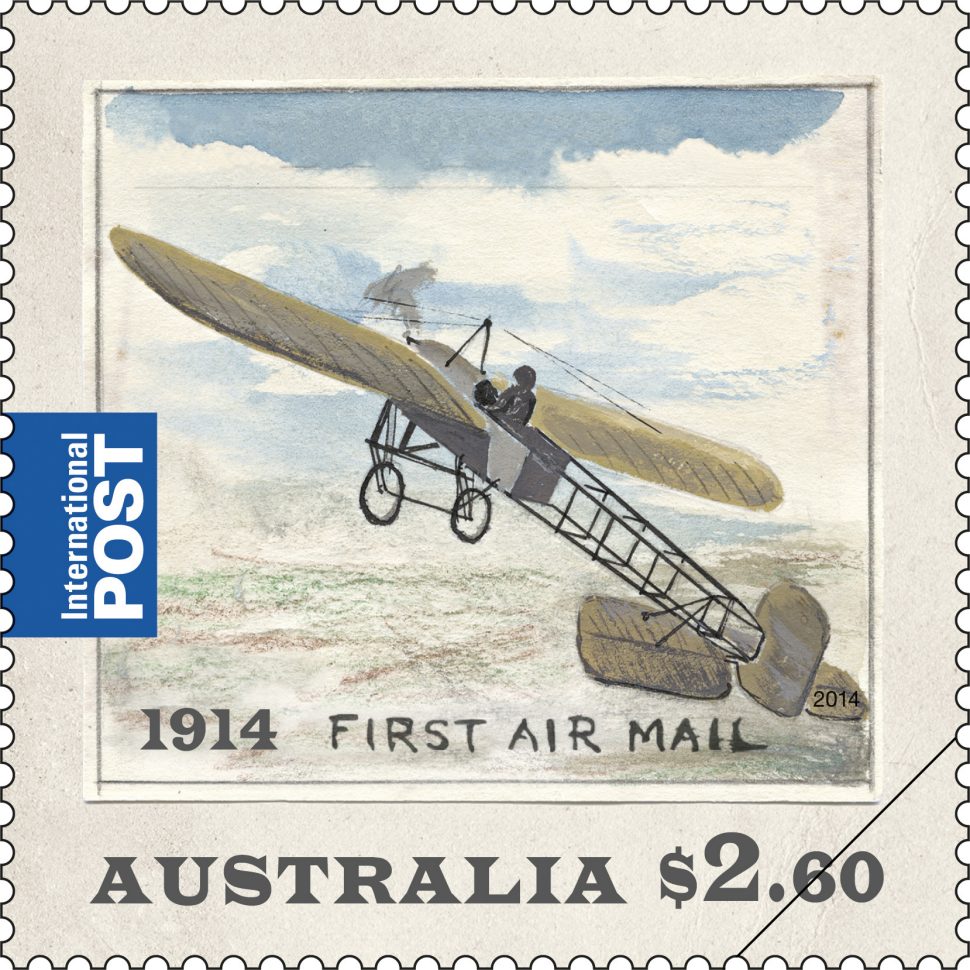There were many important flow-on effects from the first successful flight from England to Australia, by Captain Ross Smith and crew, in 1919. This epic flight half-way around the world provided the stimulus for regular international air travel and for new air routes for transport, communication and defence, and was the catalyst for the development of domestic air routes across northern Australia. A survey of the race route had even led to the first transcontinental flight by Captain Henry Wrigley and Sergeant Arthur Murphy. The epic flight also stimulated civil aviation in Australia more generally, including the establishment of Qantas in November 1920, by (among others) decorated aviator Lieutenant Hudson Fysh, who had greeted Ross Smith and his crew when they landed in Fannie Bay, Darwin, on 10 December 1919. The flight also helped to bridge the “tyranny of distance” between the new nation of Australia and the rest of the world.
This was also the first occasion that mail had reached Australia by overseas air. When the Vickers Vimy left England, on board was a bag of mail for delivery in Australia. Mail was also handed in at points along the route including Egypt, Syria, Iraq, Persia, Pakistan, India, Burma, Singapore and Indonesia.
The Centenary of First England to Australia Flight stamp issue will be released on 1 October 2019. Designed by Janet Boschen, the stamps commemorate both the flight and the first overseas airmail to Australia.
The minisheet incorporates photographs of Captain Ross Smith and his brother Lieutenant Keith Smith, who served as co-pilot and navigator.
On board the flight, Ross Smith had in his possession a handstamp “PER / VICKERS “VIMY” AEROPLANE / TO AUSTRALIA”, which he applied to the mail.
Once in Darwin, Ross Smith was in contact with then prime minister William “Billy” Hughes, requesting a special stamp to be applied to each letter, in honour of the historic nature of the flight and the mail carried on board. Hughes was keen to facilitate a permanent reminder of the event and sent a telegram to the Prime Minister’s Department in Melbourne:
Captain Ross Smith bearing letters (stop) Desires arrange for special stamp (stop)
Communicate with right authorities and arrange. Hughes.
At the time, a Universal Postal Union rule prohibited the use of commemorative stamps of “limited postal validity” in the international mail system. It was apparently on this basis that the Postmaster-General’s Department refused to issue such a stamp. The solution was a stamp that was not a postage stamp, so essentially a stamp-like design but without a denomination.
The design of the Ross Smith label was by Lieutenant George Benson (1887–1960), an official war artist at Gallipoli and the Western Front. His design featured the Vickers Vimy aircraft flying over an Olympic torch, and maps of Great Britain and Australia, with a blue background.
The airmail was received in Melbourne on 26 February 1920. A label was affixed to each cover, and a date stamp was applied to both the envelope and the label.
There were 576 labels printed by lithography from a copper half-tone block. Of the 576, at least 364 were affixed to the airmail covers – this number being those recorded in official government documents. Of the remaining supply, 125 stamps were held in reserve at the Note Printing Branch. These were destroyed on 6 September 1921, leaving 87 stamps to be accounted for. It is recorded that about 20 of these had the selvedge removed in readiness for affixing to covers, but they were not needed. Several unused examples were presented at the time to the four airman and various officials, but otherwise the labels were held in a government department for several years.
The Ross Smith label didn’t really peak the interest of stamp collectors at the time (particularly as it wasn’t actually a stamp), although when word of its development broke, many collectors wrote in to the newspapers suggesting how it should be designed.
Just under two decades later, a collection of 22 mint Ross Smith stamps (with intact selvedge) appeared on the market without any explanation, advertised for sale in London for £65 each. It was later discovered that the unused labels may have been acquired by a public servant at the time of the 1919 Air Race and put up for sale all these years later.
The huge level of interest in aerophilately in the 1930s had ensured the Ross Smith label had become a highly-prized item – hence the term that eventually replied to it, “blue cinderella”. Today, a mint label with selvedge intact can sell for tens of thousands Australian dollars. As Australian aerophilately expert Nelson Eustis once wrote, “Even if the Ross Smith remains a label it surely must be the most valuable two square inches of non‑stamp paper in the world.”
The printing block of the Ross Smith label was destroyed by government officials in 1948.
The Centenary of First England to Australia Flight stamp issue is available from 1 October 2019, online, at participating Post Offices and via mail order on 1800 331 794, while stocks last.
View the gallery and technical details from this issue
This content was produced at the time of the stamp issue release date and will not be updated.
You might also like
